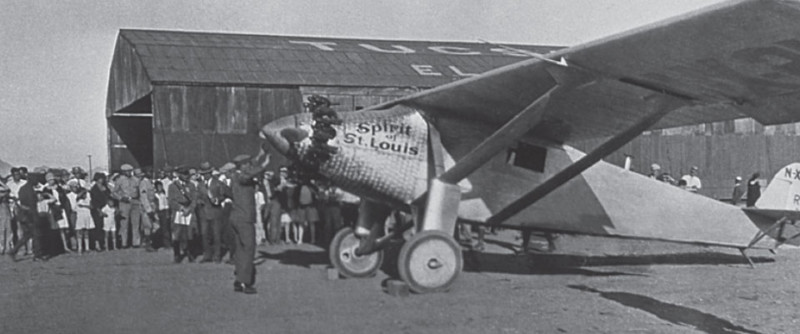History
Aviation in Tucson:
How It All Started
Aviation in Tucson has a rich and colorful history. The story began in 1910 when Charles “the bird man” Hamilton landed his Curtis Bi-Plane over 13,000 spectators at the Elysian Grove Amusement Park downtown on the east bank of the Santa Cruz River. The following year Robert Fowler and Cal Rodgers competed for a $50,000 prize offered by William Randolph Hearst to the first one to fly coast-to-coast in 30 days or less. Fowler started from California, made a landing near the University of Arizona and continued his journey east. Rodgers started from the east coast and landed his Vin Fizz on East 9th Street in Tucson. He finally arrived in Long Beach, California, after 84 days (49 in the air) although he crashed nine separate times getting there. Neither won the prize, but both succeeded in carving their names in aviation history.
In 1915, Katherine Stinson, the Schoolgirl Aviatrix, performed aerobatics at the Pima County Fair. One of the first women authorized to carry mail for the United States, she dropped a mail pouch flying low over a vacant lot downtown behind the post office and established mail route 668.001, winning the hearts of many Tucsonans.
Captivated by the technology and intrigued by the possibility, Tucson built the first municipal airport in the country on the Old Nogales Highway, where the Rodeo grounds are today. Known as McCauley field and rechristened Fishburn Field, after Tucson City Councilman Randolph Fishburn, the airport was renamed Tucson Municipal Flying Field in 1923.
The field became a regular refueling stop for the Air Service and demand soon exceeded capacity. In 1925, the field relocated to a larger parcel of land where Davis Monthan Air Force Base is today. In 1927, Standard Airlines offered Tucsonans their first commercial air service and eventually became one the country’s largest carriers—American Airlines.

Tucson was one of the stops for Charles Lindbergh who, fresh from flying his way across the continent, landed here in 1927 to dedicate the new field. The event attracted a crowd of 30,000 people, more than 20% of the State’s population.
Then, as now, growth was a given, and by the 1940s it was clear the field at Davis-Monthan should be devoted to military operations and training.
The City purchased land at the current site of Tucson International Airport (TUS) in 1941. Six years later it was apparent that the City did not have the resources to support the operation of the airport. The Chamber of Commerce found a solution in 1948 when it brought together 15 municipal leaders, led by Monte Mansfield, as incorporators of a nonprofit corporation, the Tucson Airport Authority (TAA). With 15 incorporators, the organization borrowed $25,000, repaid it within three years, and hired Bob Schmidt, the first general manager of the TAA.
The Authority led the way for aviation in Tucson, creating and managing TUS, the economic catalyst for the community, and the 64th largest commercial airport in the country; as well as Ryan Airfield (RYN), one of the busiest general aviation airports in Arizona.
About TAA
MISSION
Provide a sustainable airport system and constantly pursue initiatives that promote and grow business opportunities
The Tucson Airport Authority is a unique nonprofit created and developed by community business leaders and established by Arizona state charter in 1948. The TAA operates Tucson International Airport (TUS), the region’s major commercial airport, and Ryan Airfield (RYN), a general aviation airport west of Tucson.
TUS encompasses 7,986 acres and is eight miles south of the city’s central business district. There are hundreds of buildings on the airport complex that provide millions of square feet of space. The TAA continually looks for opportunities to acquire contiguous and nearby properties that are important for strategic and long-range purposes.
Ryan Airfield, 14 miles southwest of downtown Tucson, covers 1,904 acres and accommodates a wide variety of general aviation activity.
The TAA has long-term leases with the City of Tucson to operate and manage both airports.
The TAA does not receive any local tax dollars. Operations are funded through revenues from parking, space rentals, land leases, fuel sales, airline landing fees, and concessions. Capital improvements such as runway and terminal construction are funded through state and federal grants.
VISION
Landing Prosperity in Southern Arizona
2025 Tucson Airport Authority Members
Tucson Airport Authority Strategic Plan
